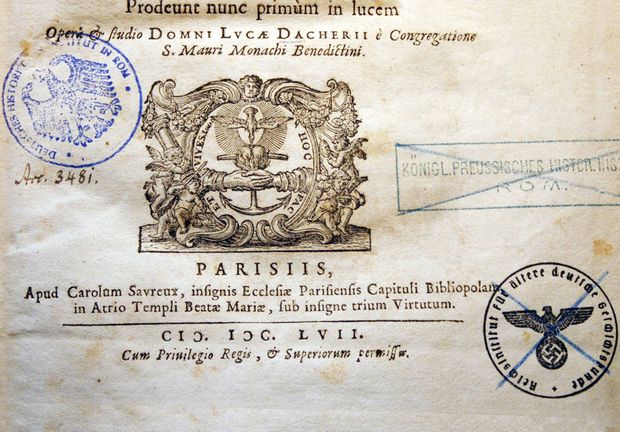
History of the Historical Library
The "Prussian Historical Station" was founded in 1888 with the main aim of investigating the German history of Reformation and confessionalization in light of the recent public release of documents preserved in the Vatican archives. In consideration of the restricted opening hours of the archive and other libraries, as well as the need to reference German historical works, the slow process of establishing an institute library began (circa 4,000 volumes until 1901).
Paul Fridolin Kehr, institute director from 1903, took the first steps towards a specialist library. The substantial growth of the library collection was accompanied by an extension to the timeframe and geography of research, stretching back to the middle ages and covering the entire peninsula. In addition, the library was opened to foreign researchers, while for the first time its organisation and administration was taken on by scientific librarians.
During the First World War the books were held in a storage facility. Later substantial sections of the library collection were transported to Germany. The remaining 22,000 titles were once again made available in 1923, however, the Great Depression hindered further development of the library.
During the Nazi regime the institute was merged with the "Reichsinstitut für ältere deutsche Geschichtskunde" (National Institute for Older German History), and later the "Anschluss" added around 1,500-2,000 books owned by the Austrian Historical Institute. After the Italian Armistice on 8 September 1943 the Institute was closed. On Hitler's orders, the complete library collection of the German cultural institutes in Rome was removed, even if, according to the provisions of an agreement made after the First World War, they were supposed to remain in Italy. Following various stages, the books were stored in different locations throughout Austria and Germany and would only return to Rome in 1946 where they were taken hold of by the Vatican library.
The library collection, reduced after the First World War to less than 30,000 works, returned to Italy as a result of diplomatic negotiations and could be replaced in the Institute following its reopening in 1953. Along with the partial return of the resources, transferred to Germany in the Twenties and Thirties, the library enjoyed a period of substantial growth that began in the Sixties. Among other things, the acquisition of a number of special collections helped to extend the historical research timeframe to the XX century.
Further sources
Detailed information (Download PDF)
Goldbrunner, Hermann M.: Von der Casa Tarpea zur Via Aurelia Antica: Zur Geschichte der Bibliothek des Deutschen Historischen Instituts in Rom. In: Reinhard Elze/Arnold Esch (eds.), Das Deutsche Historische Institut in Rom 1888–1988, Tübingen 1990 (Bibliothek des Deutschen Historischen Instituts in Rom 70), pp. 33-86.

